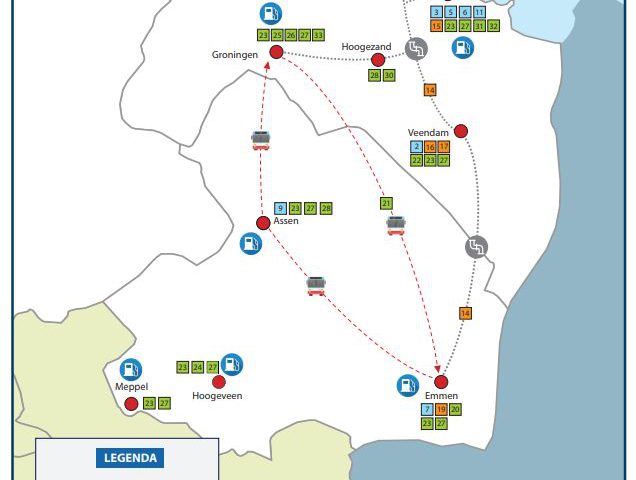Northern Netherlands presents investment agenda for large-scale emission-free hydrogen
Northern Netherlands presents investment agenda for large-scale emission-free hydrogen

Companies and governments in the Northern Netherlands plan to invest 2.8 billion euros in emission-free hydrogen over the next 12 years. Today they are offering the Minister of Economic Affairs and Climate Policy their joint investment agenda, the ‘Integral Hydrogen Plan for the Northern Netherlands’. Member of the Provincial Executive Patrick Brouns: ‘With the planned investments and targeted support from the government, we can scale up the production and use of CO2-free hydrogen considerably. This is enabling us to make industry greener and strengthen the economy in our region, in the rest of the Netherlands and beyond.’
Emission-free hydrogen can play an important role in making industry more sustainable, both as a clean alternative to raw materials and as an energy carrier. Other applications of hydrogen as an energy carrier include mobility, the built-up environment and as a ‘battery’ to absorb fluctuations in the supply of sustainable wind and solar energy. But before emission-free hydrogen is available on a large scale and can compete with fossil fuels, a large scale-up is needed in the coming years.
Companies and governments from the Northern Netherlands will present their joint investment plan for the necessary scaling-up on Thursday. They expect to produce, use and transport emission-free hydrogen on a large scale and cost-effectively by 2030. During the presentation of the plan to the Minister of Economic Affairs and Climate Policy, the signatories will be asking the Minister for support in the form of clear regulations and unambiguous certification of green hydrogen. They also stress the importance of an SDE+-like scheme to temporarily bear part of the price difference between emission-free and grey hydrogen. This ‘unprofitable top’ is expected to be 100 million euros a year until 2024.
One joint investment plan
The development of large-scale emission-free hydrogen calls for major investments and innovations. There are also major interdependencies. Investing in the production of hydrogen only makes sense if the take-up is guaranteed. On the other hand, companies will want to be sure that there is enough hydrogen in the long term before they adapt their production processes. Good transport and storage facilities are a prerequisite for large-scale production and use. Investments to achieve timely availability usually need to be made well in advance. By combining their plans and projects into one joint investment plan, the companies and governments in the Northern Netherlands are looking to take a big step towards the green industry of the future. The aim is to develop plants for the production of green hydrogen with a capacity of at least 100 megawatts (MW) and a production site for blue hydrogen with a capacity of at least 1.2 gigawatts (GW). In addition, the parties want to realise the infrastructure for the transport and storage of hydrogen and redesign the processes in industry and electricity production to enable the use of hydrogen.
Strong hydrogen economy in the Northern Netherlands
These are ambitious goals when you consider that the largest Dutch plant for the production of green hydrogen using electrolysis is now 1 MW and the largest in the world 5 MW. However, according to the nineteen parties that wrote the investment agenda, the Northern Netherlands has everything it needs to develop a strong green hydrogen economy. Knowledge institutions and companies in the region are international leaders in the development of knowledge about hydrogen. Power stations, space for solar and wind farms, landing of cables with energy from offshore wind farms: the North has enough sustainable energy for the large-scale production of clean hydrogen. The region is not lacking hydrogen users, either. There are large potential industrial customers in Eemshaven, Delfzijl and Emmen. And Nuon is making part of the Magnum power station suitable for the production of electricity from hydrogen; Hoogeveen plans to use hydrogen for district heating, and hydrogen buses and road sweeping vehicles are already driving around in the region. The existing infrastructure for natural gas can easily be rendered suitable for the transport of hydrogen within the region, but also to the rest of the Netherlands and the Ruhr area. By investing in emission-free hydrogen, the Northern Netherlands not only strengthens the regional economy and its position as an energy region in Europe, but also contributes to the national climate goals and knowledge economy.
The ‘Integral Hydrogen Plan for the Northern Netherlands’ was drawn up by nineteen parties: Avebe, BioMCN, EMMTEC services, Eneco, Engie, Equinor, ESD-SIC, Groningen Seaports, Lagerwey, NAM, Gasunie, Nedmag, Nouryon, Nuon/Vattenfall, the Province of Groningen, Shell, Suikerunie, Teijin Aramid and Waterbedrijf Groningen. Together they have a portfolio of over thirty projects to scale up the production, use and transport of hydrogen. Ranging from the development of an electrolysis unit with a capacity of 200 MW to wind turbines that produce hydrogen directly. And from the realisation of a hydrogen distribution network in Delfzijl to the establishment of the Hydrohub test and development centre at the EnTranCe energy test site.
Cas König, CEO of Groningen Seaports:
‘It’s important to implement process-related investments simultaneously. For example, it is necessary to invest simultaneously in the capture of CO2 and in a hydrogen electrolyser at a company such as BioMCN. This requires a huge amount of coordination. After all, when CO2 capture has been completed, the pipes between Eemshaven and Delfzijl must be ready, the electrolysis unit must be operational and the conversion of BioMCN must be geared to receiving hydrogen instead of natural gas. Governments can play a crucial role in the simultaneous implementation of these investments.’
Ulco Vermeulen, Executive Board of Gasunie:
‘The fact that the Northern Netherlands has an extensive gas infrastructure and unique storage facilities makes this region ideally suited to develop into a hydrogen hub. Both regional, national and international. For this hydrogen transition to succeed, we need to work together with the entire chain, from production to use. Towards 2030 we can make part of our existing infrastructure suitable for the transport and storage of hydrogen.’
Patrick Brouns, Provincial Executive for Economic Affairs of Groningen:
‘No energy transition without an industrial transition. If we want to have a virtually CO2-free society by 2050, we must now focus fully on the greening of chemicals. In this transition, emission-free hydrogen is crucial as a green raw material for chemistry and energy. Northern industry is taking its responsibility by investing heavily in the necessary scaling-up. We’re ready for the development of a thriving, clean hydrogen economy. Indeed, we have already started. With targeted support from the national government, we can accelerate the process of making industry more sustainable and achieve our ambitions.’
About grey, blue and green hydrogen
Hydrogen is currently mainly produced from fossil fuels. During the production of this ‘grey hydrogen’, for example from natural gas, the greenhouse gas CO2 is released. If that CO2 is captured and stored, we call it ‘blue hydrogen’. ‘Green hydrogen’ is produced using sustainably generated electricity, such as electricity from the sun or wind. This process is called electrolysis. Hydrogen can be used directly as a raw material in the (chemical) industry or can be converted into energy (electricity or heat).

